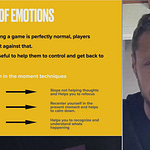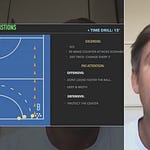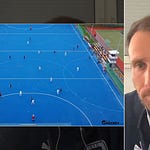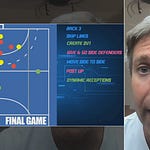Another masterclass is in the books! This time, we were fortunate to have analysis expert Simon Blanford join us again on The Hockey Site to tackle a topic close to all our hearts— scoring! Or to put it another way: are we coaching our players to make the best possible choices when they find themselves in the D?
Let’s start with a short summary of the masterclass that might just provoke you to have a good hard look at your own team’s circle stats and routines.
Meet the Expert: Simon Blanford If you’ve joined us for a masterclass before, you know Simon isn’t your average stats guy. His background is in scientific and statistical analysis, not coffee-stained “post-match shot maps”. Simon’s methodical, probability-driven approach has transformed how we look at field hockey data—and this session was no exception.
Topic of the Day:
We dug deep into decision making and outcome analysis inside the circle. Why do so many of our shots carry such a low chance of scoring? Should we be prioritising penalty corners, or can we squeeze more value from field goals? And, most controversially—are most teams even making the optimal choices once inside the D?
Key Topics Discussed:
Expected Goals (xG) Models for Field Hockey:
Simon translated the now-familiar football xG methodology for use with hockey data—using databases of thousands of shots to assign “real” probability values to every shot based on angle, distance, technical execution, pressure, and more.Shock Factor: Most Circle Shots Are Low Percentage!
The headline stat: the median shot value is only 8%, and the most common shot value in women’s international hockey is around 5%! A whopping 60% of shots have a 10% or less chance of scoring. As Simon put it, “The vast majority of shots that players are taking have very low expectations of actually scoring.” That’s a heck of a thing to process for any coach.“One and Done”: Low-Value Shots Rarely Lead to Second Opportunities
Simon showed that for Olympic-level teams, only about 20% of shots create a second chance or win a penalty corner—and for low-value shots (below a 17% chance), that number drops even further. The idea that missed shots automatically generate dangerous rebounds just didn’t hold up statistically.Rethinking Decision Making: Alternatives to the Low-Value Shot
Why are players shooting from hopeless angles instead of working for a penalty corner or moving the ball to a better position? Using real data, Simon demonstrated that passing, moving the ball or aiming for a penalty corner often increases the goal probability dramatically, sometimes by more than three times.Penalty Corners: The Great Equaliser (and Maybe the Best Option?)
Despite far fewer penalty corners than shots, top teams score as many goals from PCs as field goals—because the conversion rate is so much higher. Simon’s fun (and provocative) suggestion:"You can miss winning a corner more than half the time you try and still end up with more goals than taking low value shots."
The Rarity of PC-Oriented Play Intent
The “culture of shooting” remains strong, even at the top level. Only 10% of circle actions represent truly deliberate attempts to win a corner—most players still instinctively shoot, and rarely practice specific PC-winning actions at club or even senior training.Spatial Analysis: Heat Maps Reveal the Realities
Shot attempts vastly outnumber corner attempts in almost every sector of the circle, except on the very edges where PC-winning intent is more common. But in those spaces, it’s more a trade-off between trying to play the ball in or move it, not between shooting and winning a corner.The Coaching Dilemma and The Aesthetic of the Game
Simon highlighted a philosophical divide: Even if analysis says “play for the PC,” should we be pushing hockey down that path? Or do we keep prioritising the beauty and excitement of field goals, as advocated by thought leaders like Alyson Annan?Defenders: How Do They Respond?
An interesting sideline—if attackers shift deliberately to play for PCs, how will defenders and goalkeepers adapt? We might see a “seesaw effect” between defensive space and circle pressure as teams adjust in response.Should We Use All This Data to Coach Differently?
Simon’s family dinner table debates echo clubhouse discussions everywhere: Can analysis shift deep-seated habits? Are we ready to set up and actually practice corner-winning in the D, or will traditional shooting drills always dominate?
“Even if we know that shot probabilities are low, the El Dorado of hockey is the field goal—so we're going to do it anyway.”
Quick Takeaways:
Most circle shots are statistically unlikely to score.
Creating rebounds and repeat chances from low-value shots happens much less than we think.
Winning and converting PCs is often a better bet—if you can up your conversion rate.
We're stubbornly attached to shooting, but perhaps it's time to coach our players to win more corners—and actually train those situations!
Want to See More?
This summary just scratches the surface. If you want to see the supporting data, demo videos, and get the most out of Simon’s insights, make sure to check out the full masterclass recording—available on demand now for our paid subscribers… as well as a bit more of a deep dive below ↓
Don’t forget to experiment—your next three-pointer could come from a corner, not a Hail Mary shot.
Read on for…
The analytics revolution in field hockey
Going beyond counting shots
Shots Are Not Isolated Events
Alternative Decision Pathways
Penalty Corners: The Consistent Engine of Scoring
Reflections from Q&A
















